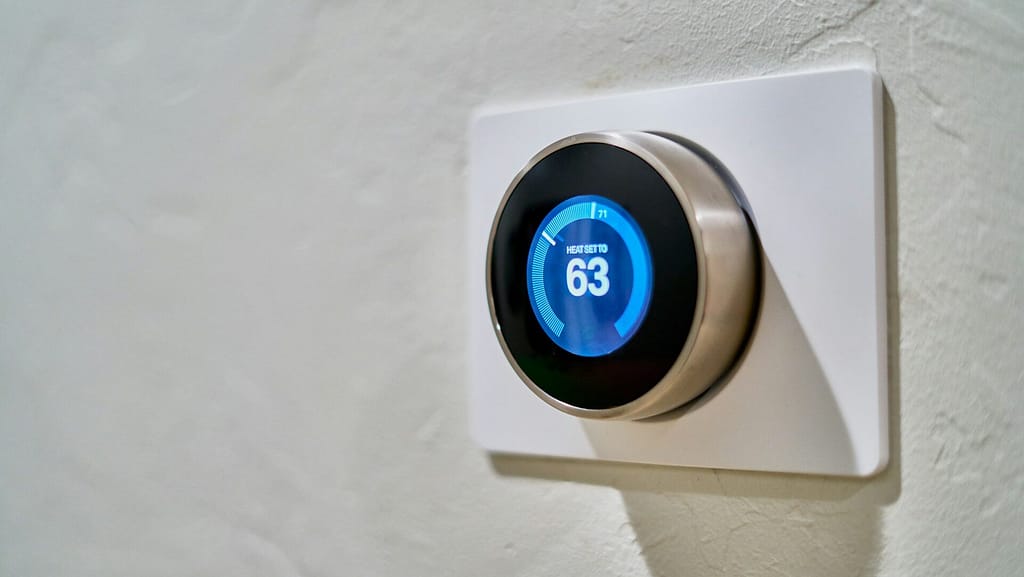With the continued advancement in home technology, one of the most rewarding is using smart thermostats for climate control. Integrating this device into your home will vastly improve your comfort while also reducing energy consumption. Smart thermostats are a worthwhile investment for those aiming to lower their energy bills and carbon footprint. But how do they function, and how can you make the most of their features? Let’s explore further.
Understanding Smart Thermostats
A smart thermostat is an advanced, Wi-Fi-enabled device that lets you remotely manage your home’s heating and cooling system. Unlike traditional thermostats that require manual adjustments, smart thermostats learn from user behavior and preferences to automatically regulate temperatures to your preferences.
Key features include:
- Wi-Fi Connectivity: Allowing remote control via a mobile app.
- Learning Algorithms: These adapt to your schedule and habits.
Smart Home Integration: Compatible with systems like Amazon Alexa, Google Home, and others.
Advantages of Smart Thermostats
Why should you consider a smart thermostat? Here are some reasons:
- Energy Efficiency: Optimizes heating and cooling for significant energy savings.
- Cost Reduction: Lower energy use translates to reduced utility bills.
- Convenience: Manage your home’s climate from anywhere.
Smart Home Integration: Seamlessly works with other smart devices for an interconnected home experience.
How Smart Thermostats Conserve Energy
Understanding their function can help you maximize energy savings:
- Adaptive Algorithms: Learn your schedule to efficiently adjust temperatures when you’re home and when you’re away.
- Temperature Scheduling: Set preferences for different times and days.
- Geo-Fencing: Adjusts temperatures based on your smartphone’s location.
Tips for Enhancing Energy Savings with Smart Thermostats
Make the most of your smart thermostat with these tips:
1. Ideal Installation
Correct placement is crucial for effectiveness:
- Avoid Sunlight: Direct sunlight can lead to inaccurate readings.
- Avoid Drafts: Drafty areas can cause incorrect temperature adjustments.
2. Effective Scheduling
Planning can significantly boost efficiency:
- Day and Night Settings: Lower temperatures at night can save energy and improve sleep.
- Weekday vs. Weekend Programs: Customize schedules based on your weekly routine.
3. Using Geo-Fencing
Geo-fencing can effectively manage home temperatures:
- Operational Insight: Adjusts based on your arrival and departure.
- Optimization Tips: Set boundaries that provide enough time for temperature adjustments.
4. Integration with Other Devices
Pair your thermostat with other smart devices for better performance:
- Smart Vents: Automatically regulate airflow for efficiency.
- Humidity Controllers: Maintain comfortable humidity levels.
5. Upkeep and Updates
Regular maintenance ensures optimal performance:
- Firmware Updates: Keep your device updated for better functionality and security.
- Maintenance: Regular cleaning and battery replacements are essential.
Seasonal Energy-Saving Settings
Winter Adjustments
Save on heating during winter:
- Temperature Suggestions: Set around 68°F when at home, lower when away or sleeping.
- Additional Tips: Use heavy curtains and seal leaks to retain heat.
Summer Adjustments
Stay cool and save energy:
- Temperature Suggestions: Set around 75°F when at home, higher when out.
- Additional Tips: Use fans and keep curtains closed during the day.
Spring and Fall Settings
Minor adjustments during milder weather can be effective:
- Adjust settings by a few degrees to balance comfort and energy savings.
See the US Department of Energy for more information on energy saving with programmable thermostats.
Mistakes to Avoid
Avoid common pitfalls with smart thermostats:
- Manual Override Neglect: Use this feature on unpredictable days.
- Inconsistent Settings: Keep settings consistent for smart scheduling to work effectively.
- Underutilizing Features: Fully utilize learning algorithms and smart integrations.
Comparing Smart Thermostat Models
Here’s a brief comparison of some leading models:
Standout Feature: Adaptive Learning
Nest thermostats, especially the Nest Learning Thermostat, are great at learning your schedule and temperature preferences automatically. Over time, they fine-tune the temperature settings based on your habits, so you don’t have to keep adjusting them yourself. This ability to learn and adapt makes Nest super user-friendly and efficient.
Standout Feature: Room Sensors
Ecobee thermostats, like the Ecobee SmartThermostat with Voice Control, come with room sensors that check the temperature and occupancy in different rooms. This means they can balance heating and cooling throughout your house, fixing those annoying hot or cold spots. With Ecobee, you get a more customized comfort experience since it adjusts based on where you are in the house.
Standout Feature: Versatility and Customization
Honeywell thermostats, such as the Honeywell Home T9 Smart Thermostat, are known for working with a wide variety of HVAC systems. They offer tons of customization options, letting you set detailed schedules and integrate with different smart home platforms. Honeywell’s flexibility is a big advantage if you have a unique heating and cooling setup or want more control over your system.
Conclusion
Whether you’re looking to save on energy bills or improve the comfort of your home, smart thermostats are a great addition to any living space. By following these tips, you can make the most of this technology and contribute to a more energy-efficient home.
FAQs
How much energy do smart thermostats save?
They can save up to 10-12% on heating and 15% on cooling.
Are smart thermostats worth it?
Despite the initial cost, the long-term savings often make them a worthy investment.
How do they work with heat pumps?
They enhance efficiency by managing set points and auxiliary heating.
Can I install one myself?
Many come with guides for DIY installation, though professional setup is recommended for complex systems.

